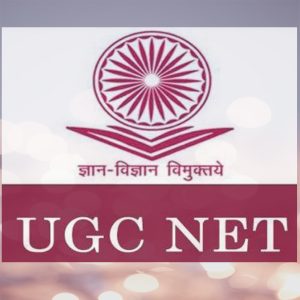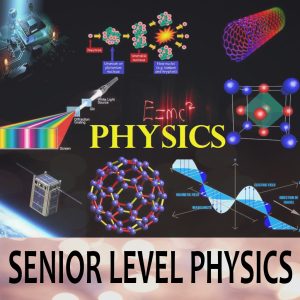Information technology (IT) is the use of any computers, storage, networking and other physical devices, infrastructure and processes to create, process, store, secure and exchange all forms of electronic data. Typically, IT is used in the context of business operations, as opposed to technology used for personal or entertainment purposes. The commercial use of IT encompasses both computer technology and telecommunications.
The Harvard Business Review coined the term information technology to make a distinction between purpose-built machines designed to perform a limited scope of functions, and general-purpose computing machines that could be programmed for various tasks. As the IT industry evolved from the mid-20th century, computing capability increased, while device cost and energy consumption decreased, a cycle that continues today when new technologies emerge.
What does information technology encompass?
The term information technology has grown to embrace an array of technologies and related disciplines. IT still comprises basic computer-based information systems, including computing hardware, operating systems (OSes), application software and the data that is processed to produce useful information. Over time, each of these IT components and functions has become more complex, embracing ever-growing subsets of technologies and methodologies.
For example, application development began as a relatively linear process where systems analysts and programmers created code to achieve a business purpose. It has evolved into a more cooperative and organic process that embodies application creation processes, such as DevOps and agile software development.
Even operating systems — the basic code that makes servers and client computers work — have taken on new dimensions. Technologies such as virtualization and containerization have broken, or at least changed, the bond between OSes and host hardware. As a result, IT no longer just happens locally; cloud computing environments now complement and even replace on-premises resources of the traditional data center.
All these developments have made IT more complex and required greater specialization and new roles and responsibilities from the IT workforce.
Why is information technology important?
It’s been said that data is what powers industries worldwide. That may be hyperbole, but few businesses — large or small — can remain competitive without the ability to collect data and turn it into useful information. IT provides the means to develop, process, analyze, exchange, store and secure information.
Data processing plays a significant role in these core business practices, among others, including:
- product development and design;
- marketing and market research;
- sales and invoicing;
- customer development and retention;
- accounting and taxes;
- human resources and payroll; and
- regulatory compliance.
Computing has penetrated practically every part of business and much of our personal lives, as well. The ubiquity of computing — also referred to as pervasive computing — is another reason why IT is critical. Computing devices have evolved well beyond personal computers (PCs) and servers. Today, all businesses and most individuals have and use multiple computing devices, including phones, tablets, laptops, game consoles and even doorbells, thermostats, vacuums and many kitchen appliances.
Virtually all of these devices, many of which are part of the internet of things (IoT), tap into the internet, which interconnects billions of devices worldwide. It’s a complex and, potentially, perilous environment that requires IT expertise for management, security, maintenance and reliability.
IT software and hardware
IT includes several layers of physical equipment (hardware), virtualization, management systems, automation tools, operating systems, other system software and applications used to perform essential functions. As noted above, user devices, peripherals and software can be included in the IT domain. IT can also refer to the architectures, methodologies and regulations governing the use and storage of data.
Software
There are two categories of software: system software and applications. System software encompasses the computer programs that manage the basic computing functions. They include the following:
- OSes;
- basic input/output systems (BIOSes);
- boot programs;
- assemblers; and
- device drivers.
Business applications include:
- databases, such as SQL Server;
- transactional systems, such as real-time order entry;
- email servers, like Microsoft Exchange
- web servers, like Apache and Microsoft’s Internet Information Services (IIS);
- customer relationship management (CRM), such as Oracle NetSuite and HubSpot; and
- enterprise resource planning (ERP) systems, like SAP S/4HANA.These applications make use of programmed instructions to manipulate, consolidate, disperse and otherwise work with data for a business purpose.
Mobile applications that run on smartphones, tablets and other portable devices typically connect with cloud or data center applications over the internet. These applications have expanded the scope of computing and created a new category of software and telecommunications that requires special expertise to maintain.
Hardware
There are many different types of computer hardware. Computer servers run business applications. Servers interact with client devices in the client-server model. They also communicate with other servers across computer networks, which typically link to the internet.
Storage is another type of hardware. It’s any technology that holds information as data. Storage may be local on a specific server or shared among many servers, and it may be installed on premises or accessed via a cloud service. Information that is stored can take many forms, including file, multimedia, telephony, and web and sensors data. Storage hardware includes volatile random-access memory (RAM) as well as non-volatile tape, hard disk drives and solid-state drives.
Telecom equipment, comprising network interface cards (NICs), cabling, wireless communications and switching devices, connect the hardware elements together and to external networks.
Abstracting hardware and software
IT architectures have evolved to include virtualization and cloud computing, where physical resources are abstracted and pooled in different configurations to meet application requirements. Clouds may be distributed across locations and shared with other IT users, or they can be contained within a corporate data center, or some combination of both deployments.
Volatility is a characteristic of virtualized resources, enabling them to expand and contract as needed. Subscription-based cloud or locally installed resources, such as storage or composable architectures, can spin up resources, such as servers, OSes and application software, as needed and then release them when processing is complete.
IT education and job functions
A team of administrators and other technical staffers deploy and manage a company’s IT infrastructure and assets. IT teams depend on a range of specialized information and technology skills and knowledge to support equipment, applications and activities. Third-party contractors and IT vendor support personnel augment the IT team.
The information technology profession is extremely diverse. IT workers can specialize in fields such as software development; application management; hardware components; server, storage or network administration; network architecture; and more. Many businesses seek IT professionals with mixed or overlapping skill sets.





Reviews
There are no reviews yet.